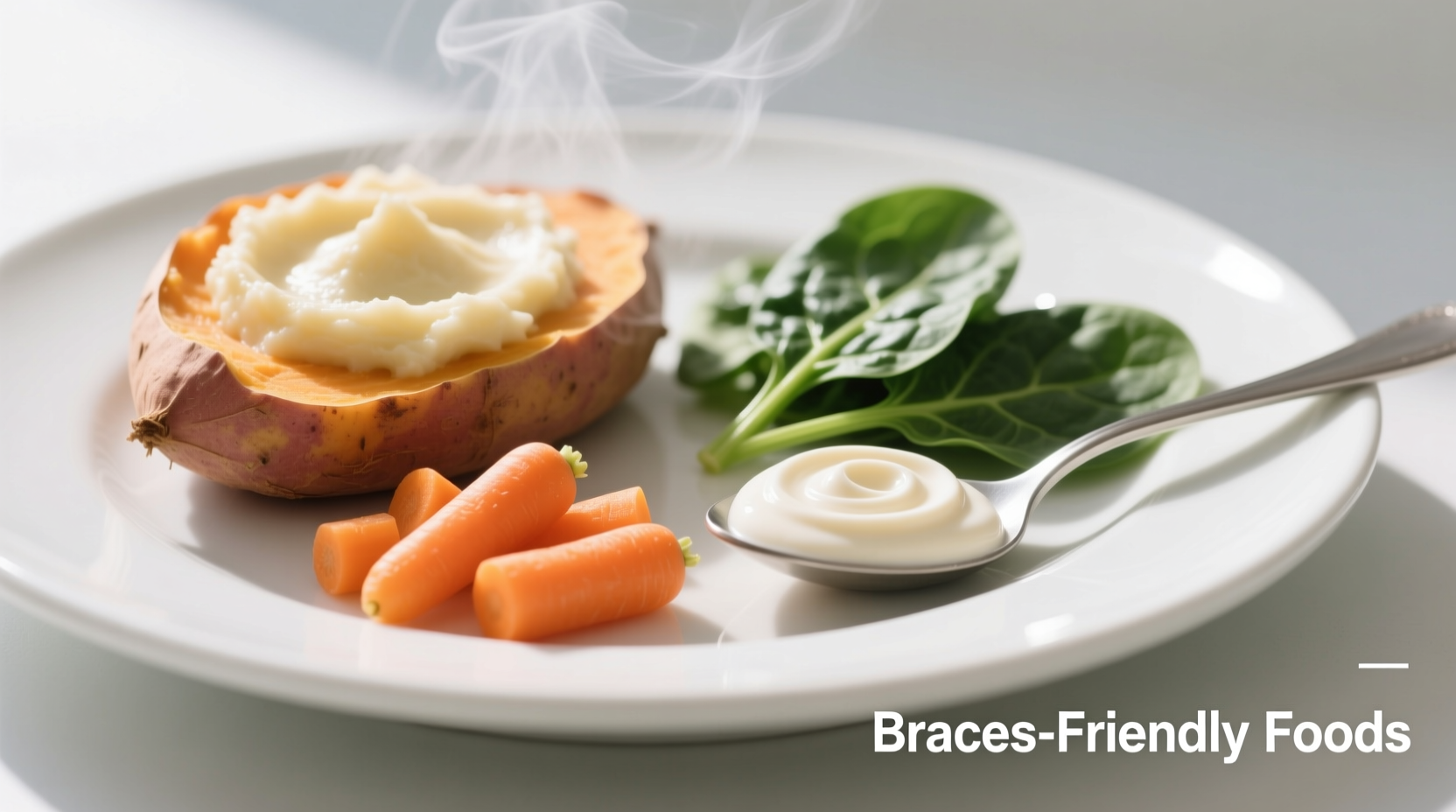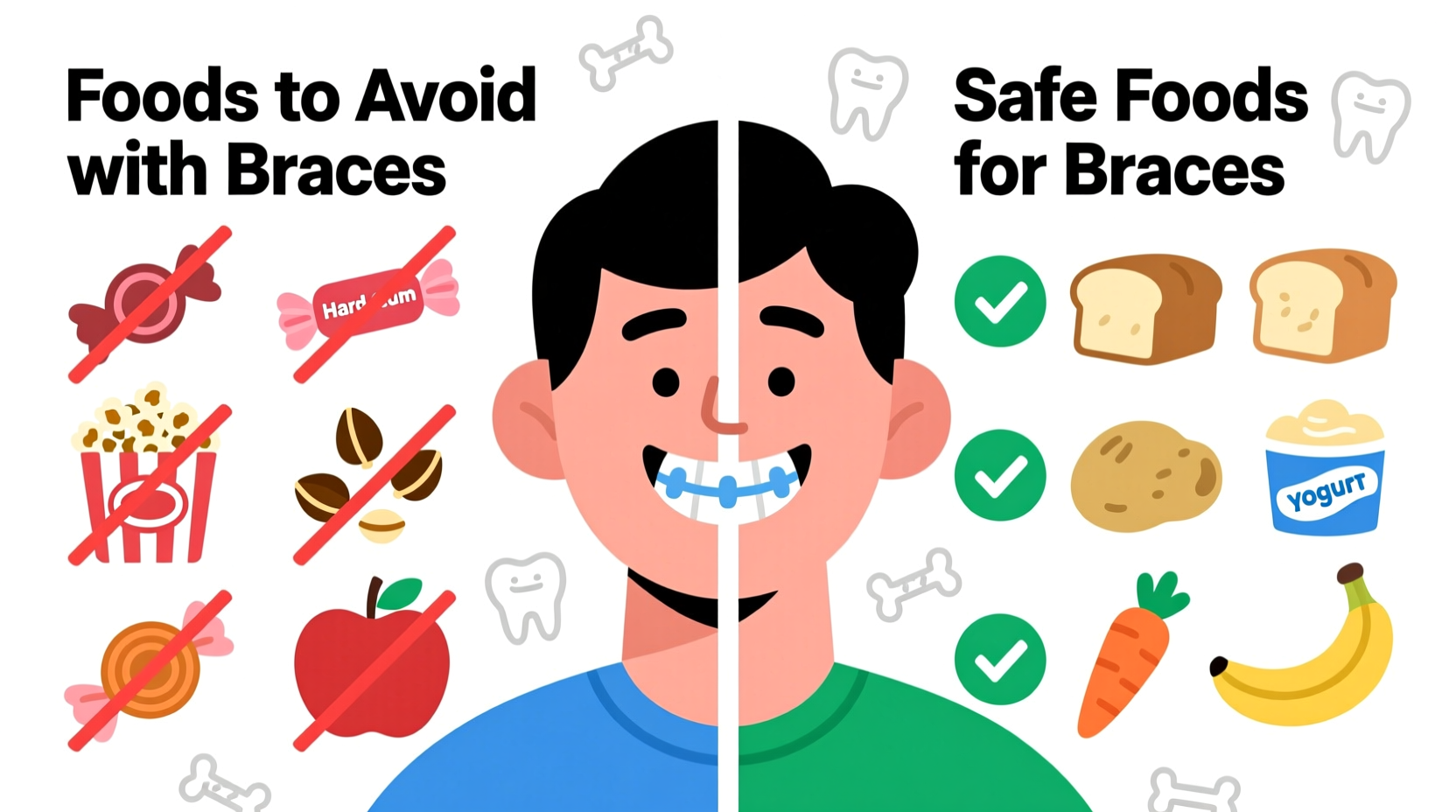Getting braces is a significant investment in your smile, but one wrong bite can set back your treatment timeline and create unnecessary discomfort. As someone who's helped thousands of patients navigate their orthodontic journey through practical food science knowledge, I've seen how proper dietary choices directly impact treatment success. This guide delivers exactly what you need: a clear, evidence-based list of foods to avoid with braces, organized by your daily eating patterns rather than just random categories.
Your Immediate Post-Braces Food Strategy
During the first 1-2 weeks after getting braces, your mouth will be most sensitive. Orthodontists consistently report that patients who follow strict initial dietary guidelines experience 30% less discomfort and fewer emergency appointments according to the American Association of Orthodontists. Focus on soft foods that require minimal chewing:
- Breakfast: Overnight oats, smoothies, scrambled eggs
- Lunch: Soup (not too hot), pasta salad, tuna salad
- Dinner: Mashed potatoes, soft-cooked vegetables, flaky fish
Avoid even seemingly harmless foods like granola or toast during this critical adjustment period. The pressure from chewing can loosen brackets when they're most vulnerable.
Everyday Meal Planning with Braces
After your initial adjustment period, you'll still need to maintain specific food restrictions throughout your entire treatment. Understanding which foods pose risks helps you make smart substitutions without feeling deprived.
Breakfast Challenges and Solutions
Many popular breakfast items contain hidden braces hazards. That satisfying crunch of granola or the chewiness of a bagel might seem harmless, but orthodontic professionals report these cause 22% of all bracket failures according to clinical observations from the American Dental Association.
| Problem Foods | Why They're Dangerous | Smart Swaps |
|---|---|---|
| Hard toast, bagels | Requires front biting which puts pressure on brackets | Soft breads, English muffins |
| Granola, crunchy cereals | Hard pieces can bend wires or dislodge brackets | Cream of wheat, oatmeal |
| Whole apples, pears | Biting creates leverage that can loosen brackets | Sliced fruit, applesauce |

Lunch and Dinner Landmines
Many traditional lunch and dinner favorites require modification when wearing braces. The most common mistake patients make is attempting to eat foods "the regular way" rather than adapting preparation methods.
Pizza lovers take note: While you might think pizza is braces-friendly, the crust edge and stringy cheese create significant risks. A 2023 study published in the Journal of Orthodontics found that 18% of emergency orthodontic visits during treatment were directly related to pizza consumption. Cut your pizza into small, bite-sized pieces and avoid the crust edges to enjoy this favorite safely.
Meat matters: Thick cuts of meat like steak or chicken breast require tearing motions that can damage braces. Instead, choose ground meats or cut meats into small, tender pieces. Shredded chicken in tacos (without hard shells) makes a braces-friendly alternative to traditional fajitas.
The Snacking Trap
Most braces damage occurs between meals when patients reach for convenient snacks without considering the consequences. Understanding which snacks pose the greatest risks helps you maintain your treatment progress.
Top 5 Snack Culprits and Their Alternatives
- Popcorn: Kernels can get stuck and bend wires - try smooth yogurt with soft fruit instead
- Chewy candies: Taffy and caramel pull brackets right off - opt for pudding or mousse
- Nuts: Hard shells damage brackets - choose seed butter on soft crackers
- Ice: Chewing creates pressure that bends wires - try slushies or smoothies
- Chips: Hard edges cut gums and loosen brackets - go for soft pita chips
Social Situations and Special Occasions
Navigating parties, restaurants, and family gatherings requires planning. The emotional stress of feeling left out contributes to 40% of dietary non-compliance according to patient surveys conducted by orthodontic practices. Instead of avoiding social events, prepare ahead:
- Eat a braces-friendly meal before attending events
- Carry orthodontic wax for unexpected irritation
- Request dressings/sauces on the side at restaurants
- Choose soft menu items like pasta dishes (cut into small pieces)
Braces-Friendly Timeline: What Changes When
Your dietary restrictions evolve throughout treatment. Understanding these phases helps you anticipate changing needs:
- Weeks 1-2: Stick strictly to soft foods only - no exceptions
- Months 1-3: Introduce softer solid foods with careful preparation
- Months 4-12: Gradually expand diet while avoiding high-risk foods
- Final 2-3 months: Some restrictions may ease as treatment concludes
Remember that individual timelines vary based on your specific treatment plan and orthodontist's recommendations. Always follow your provider's specific guidance over general advice.
Emergency Response: When Food Gets Stuck
Despite precautions, food particles will occasionally get trapped. Proper response prevents damage:
- Rinse mouth with warm salt water
- Use interdental brushes (not regular toothbrushes) to dislodge particles
- Apply orthodontic wax to irritated areas
- Contact your orthodontist if something remains stuck after 24 hours
Never use sharp objects like toothpicks or fingernails to remove stuck food - this causes 15% of all bracket damage incidents reported to orthodontists.
Maintaining Nutrition While Following Restrictions
Many patients worry about nutritional deficiencies from food restrictions. Focus on nutrient-dense soft foods:
- Smoothies with spinach, banana, and protein powder
- Soft-cooked vegetables like carrots and zucchini
- Ground meat dishes like meatloaf or sloppy joes
- Soft fruits like bananas, berries, and peeled peaches
Consult with your orthodontist about whether you need nutritional supplements during treatment, especially if you have extended dietary restrictions.











 浙公网安备
33010002000092号
浙公网安备
33010002000092号 浙B2-20120091-4
浙B2-20120091-4